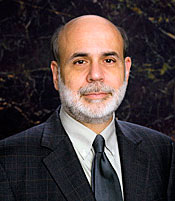
Federal Reserve Chairman Ben Bernanke gave a detailed overview of housing in comments before the NAHB.
Federal Reserve Chairman Ben Bernanke offered measured comments on housing in a speech at the National Association of Home Builder’s (NAHB) International Builders Show in Orlando, Florida on Friday, describing a market more in transition than one that has emerged from the recession.
Beginning his speech with an overview of the housing market, Bernanke said that imbalances of supply and demand have been the root of housing’s post-boom ills.
“For the past few years, the actual and potential supply of single-family homes has greatly exceeded the effective demand,” Bernanke said. “According to the most recent estimate, about one to three-quarters of a million homes are currently unoccupied and for sale. While this figure has declined slightly during the past few years, it is nonetheless up dramatically from the first half of the 2000s, when readings of about one to one-fourth of a million vacant homes were the norm.”
A big contributor to that influx of supply, Bernanke said, has been foreclosures, with roughly two million properties entering the foreclosure process in the last few years. The high foreclosure rates are likely to continue, and because of that, supply will continue to outpace demand and place downward pressure on the need for new construction.
Bernanke also spoke about the effects foreclosures have on neighborhoods and communities, both legal and economic.
“Many foreclosed homes are neglected or abandoned, as legal proceedings or other factors delay their resale,” the Fed chairman said. “Deteriorating or vacant properties can, in turn, directly affect the quality of life in a neighborhood, for example, by leading to increases in vandalism or crime. Moreover, the continuing price declines typical in neighborhoods with many foreclosures depress the tax base of the community.”
The effect, he said, is a “vicious” cycle of increasing vacancies that lower tax revenues, which lead to cuts in social services that further destabilize home prices and homeownership.
Along with overwhelming supply, Bernanke also highlighted stricter credit lines as a cause for housing’s slow recovery, a point that both the National Association of Realtors and the NAHB have made repeatedly in recent months.
“One reason for the very slow recovery in mortgage credit, despite monetary policy actions that have helped drive mortgage rates to historically low levels, is that many lending institutions have tightened underwriting conditions dramatically, relative to the pre-recession period,” Bernanke said. “Given the lax standards during the credit boom, some tightening was doubtless appropriate to protect consumers and ensure lenders’ safety and soundness. However, current lending practices appear to reflect, in part, obstacles that are limiting or preventing lending even to creditworthy households.”
Though he did devote a large portion of his speech to diagnosing housing’s shortcomings, Bernanke did inspect the policy-side of housing as well, particularly the REO conversion program that he himself helped spur to action.
“[K]eeping paying tenants in homes – including leasing to the former owners at market rents – may, in some cases, be the best way to maintain property values and the quality of neighborhoods,” Bernanke said. “REO-to-rental programs could potentially also minimize the amount of time that a vacant property languishes in REO inventory. That is, appropriately structured programs could help some involuntary renters become owners again by giving them options to purchase the homes they are renting.”
Bernanke was quick to say that such a program would not, necessarily, be a “silver bullet” for housing, as there are inherent challenges in such a program.
Selling the properties in bulk to investors to rent out has proven difficult at times because of lack of financing,” Bernanke said. “In addition, many REO properties may not be appropriate for REO-to-rental programs, either because they are in very poor condition or because they are not part of a sufficiently large cluster of properties to allow for economies of scale in their management.”
Despite his tone, Bernanke did end his speech on a hopeful note, emphasizing that many programs, in addressing the many levels of housing, will ultimately be the answer.
“No single solution will be sufficient,” he said. “But sustained efforts to address the many interlocking factors holding back the housing market will pay dividends in the long run.”